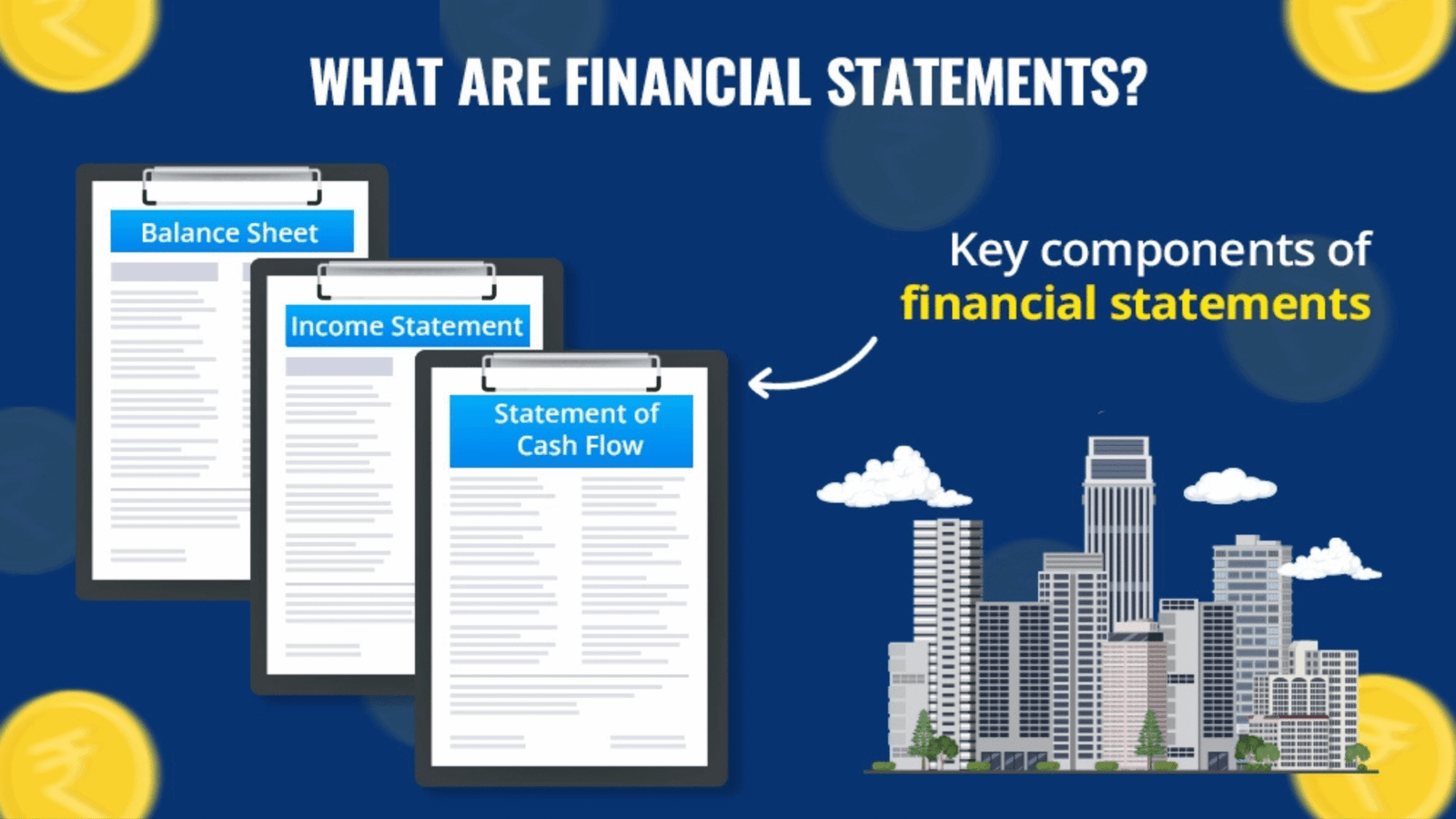Did you know that a mere $50 invested monthly from age 25 could grow to over $100,000 by retirement age? This surprising fact demolishes the myth that building wealth requires large sums of cash upfront. Anyone can begin investing with just a few dollars and proper strategy.
Many people delay starting their investment journey because they believe they need thousands to make meaningful progress. The truth? Small, consistent contributions often outperform larger, irregular deposits thanks to compound interest—the financial force that Einstein reportedly called “the eighth wonder of the world.”
Today’s financial landscape offers numerous platforms designed for beginners with minimal capital. These tools have dramatically lowered the entry barriers that once made investing seem exclusive to the wealthy.
The most critical factor isn’t how much you start with—it’s simply that you start. Time in the market typically matters more than timing the market, giving those who begin early a significant advantage regardless of initial investment size.
Key Takeaways
- You can start investing with as little as $50 per month
- Compound interest significantly multiplies small investments over time
- Consistency matters more than your initial investment amount
- Modern investment platforms have eliminated high minimum requirements
- Beginning early provides advantages regardless of starting capital
- Small, regular investments often outperform larger irregular contributions
Understand the Basics of Investing
The cornerstone of successful investing lies in comprehending fundamental concepts, even with modest capital. Many individuals eschew investing, perceiving it as a domain reserved for those with substantial financial resources or advanced knowledge. In reality, mastering the basics empowers anyone to initiate wealth accumulation, irrespective of their financial standing.
Investing entails the allocation of resources, predominantly financial, with the anticipation of generating income or profit over an extended period. It diverges from saving, which merely preserves capital, by actively deploying funds. Unlike gambling, which hinges on chance, investing is predicated on informed decision-making, grounded in thorough research and analysis.
The interplay between risk and reward is critical to grasping the essence of investing. Generally, investments with higher return potentials are accompanied by increased risks. For novices, identifying a risk tolerance level within this spectrum is imperative for enduring success.
“The biggest risk of all is not taking one. The only way to avoid loss is to sit in cash, which guarantees you will lose at least a little.”
Investing your capital over saving it is advantageous due to the power of compounding growth over time. Pension data indicates that investments growing at a mere 5% annually can significantly enhance long-term wealth accumulation. This growth aids in combating inflation, which diminishes the purchasing power of money in traditional savings accounts.
Consider this: $1,000 in a savings account earning 0.5% interest would be worth approximately $1,051 after 10 years. The same $1,000 invested with a 5% annual return would grow to about $1,629—a substantial difference that exemplifies the power of compound interest, a cornerstone principle in investing.
For those commencing with limited funds, it is vital to comprehend various investment types. Each investment vehicle possesses distinct characteristics, risk profiles, and return potentials. Let’s explore the most prevalent options:
| Investment Type | Risk Level | Typical Returns | Minimum Investment | Best For |
|---|---|---|---|---|
| Stocks | Medium to High | 7-10% annually (historical average) | Price of one share (can be fractional) | Long-term growth |
| Bonds | Low to Medium | 2-5% annually | $25-$1,000 | Income and stability |
| ETFs | Varies by type | 5-8% annually (average) | Price of one share | Diversification with limited funds |
| Mutual Funds | Varies by type | 4-8% annually (average) | $500-$3,000 typically | Professional management |
| Real Estate Investment Trusts (REITs) | Medium | 5-9% annually | Price of one share | Real estate exposure without buying property |
Stocks represent equity in a company and offer the prospect of substantial growth, albeit with volatility. For novices with minimal capital, fractional shares now enable investment in expensive stocks with just a few dollars.
Bonds are loans extended to governments or corporations. They generally yield lower returns than stocks but provide stability and regular income through interest payments.
Exchange-Traded Funds (ETFs) and mutual funds aggregate funds from numerous investors to purchase a diversified portfolio of securities. These are exemplary beginner investing tips as they offer immediate diversification, reducing risk compared to individual stock purchases.
When initiating with limited capital, ETFs are often preferable to mutual funds due to their lower minimum investment requirements and expense ratios. Many brokerages now offer commission-free ETF trading, making them more accessible for new investors.
Grasping these foundational principles is the first step in your investment journey. As you continue to learn, you will develop a more sophisticated understanding of how these principles apply to your specific financial situation and goals.
Investing is a marathon, not a sprint. The most successful investors are those who begin early, even with small amounts, and maintain consistency over time. This simple investment guide principle of patience and persistence often outweighs the initial capital required.
Assess Your Financial Situation
Embarking on an investment journey necessitates a thorough evaluation of one’s financial health, a critical step for those with modest resources. Prior to investing, a precise understanding of one’s financial standing is imperative. This foundational assessment sets the stage for future investment decisions, fostering realistic expectations.
Calculate Your Net Worth
Net worth serves as a financial snapshot, revealing the disparity between assets and liabilities. This calculation forms the basis for tracking financial progress as one commences investing.
To compute net worth, adhere to the following protocol:
- List all your assets – Include cash, bank accounts, retirement accounts, property, vehicles, and valuable possessions.
- List all your liabilities – Document all debts including credit cards, student loans, auto loans, and mortgages.
- Subtract liabilities from assets – The resultant figure represents your net worth.
Initial net worth assessments may reveal a negative or lower-than-anticipated figure. This is common, given the financial realities faced by many, including younger adults burdened by student loans. The objective is to establish a baseline and strive for improvement.
Create a Budget for Investing
Securing funds for investment can appear daunting, yet even modest sums can accumulate over time. The essence lies in consistent investment and effective budgeting.
The 50/30/20 rule offers a viable framework for allocating after-tax income:
- 50% for necessities (housing, food, utilities)
- 30% for wants (entertainment, dining out)
- 20% for savings and investments
Adhering to the 20% target might be challenging. Initiate with smaller amounts, such as $25-50 monthly, to build momentum. The critical steps to get started in investing involve establishing a consistent investment routine, regardless of the amount.
Analyze your spending habits to identify areas for cost reduction. Often, discretionary expenses like subscription services, dining out, and impulsive purchases can be realigned toward investment goals. Many investors achieved success by making incremental adjustments to their spending habits.
Identify Your Financial Goals
Investing without defined objectives is akin to sailing without a destination. Different financial aspirations demand tailored investment strategies. A fundamental piece of beginner investor advice is to articulate your investment goals before selecting the appropriate investment vehicles.
Common financial objectives include:
- Building an emergency fund (short-term)
- Saving for a home down payment (medium-term)
- Funding education (medium to long-term)
- Preparing for retirement (long-term)
For each goal, establish a specific target amount and timeframe. This clarity aids in selecting the most suitable investment vehicles and risk tolerance levels for each objective. Utilizing the SMART framework—Specific, Measurable, Achievable, Relevant, and Time-bound—provides a structured approach to goal setting.
| Financial Goal | Typical Timeframe | Suitable Investment Approaches | Risk Tolerance |
|---|---|---|---|
| Emergency Fund | 0-2 years | High-yield savings, money market accounts | Very low |
| Home Down Payment | 2-5 years | CDs, short-term bond funds | Low |
| Education Funding | 5-18 years | 529 plans, balanced mutual funds | Low to moderate |
| Retirement | 20+ years | Diversified portfolio, index funds | Moderate to high |
Be pragmatic about your financial goals, considering your current financial situation. If resources are limited, prioritize building a solid foundation—establishing an emergency fund and eliminating high-interest debt—before pursuing more aggressive investment goals.
Financial assessments are not a one-time task. As your income, expenses, and goals evolve, revisit this process regularly. Many successful investors schedule quarterly financial check-ins to ensure their investment strategy remains aligned with their current situation and future objectives.
This honest self-assessment, though not the most thrilling aspect of investing, is arguably the most critical. By taking these foundational steps, even with modest resources, one significantly enhances their chances of investment success.
Start with a Savings Account

Initiating your investment journey with a savings account is a strategy advocated by financial experts. This tool, though not an investment vehicle per se, lays the groundwork for financial stability. It is a critical step for those with limited funds, preparing them for more risky ventures.
Creating a robust financial base commences with the establishment of an emergency fund. Financial advisors uniformly advocate for a reserve capable of covering 3-6 months of essential expenses. This fund acts as a bulwark against market fluctuations and unforeseen financial exigencies, preventing the need for premature investment liquidation.
Studies affirm that individuals with sufficient emergency funds experience diminished financial stress and make more informed investment choices. In the face of unforeseen expenses, such as medical bills or car repairs, those without emergency savings often turn to high-interest debt or premature investment withdrawal. Such actions can jeopardize long-term financial objectives.
For those with limited financial means, incrementally building this fund is entirely acceptable. Automating small, consistent contributions from each paycheck is advisable. Even modest weekly contributions, such as $25-50, can accumulate into a substantial emergency fund over time. This method embodies one of the best ways to invest money – beginning with small, consistent steps.
Once committed to building an emergency fund, the next step is determining where to store it. High-yield savings accounts emerge as a viable option. Unlike traditional savings accounts, which typically yield minimal interest (often 0.01%-0.05%), high-yield alternatives offer returns 10-20 times higher, currently ranging from 3%-5% annually.
Online banks generally offer the most competitive rates due to their lower overhead costs compared to traditional banks. These savings are then passed on to customers through higher interest rates. The intense competition for deposits among online banks further drives up the rates available to consumers.
| Financial Institution | Current APY | Minimum Balance | Monthly Fees | Special Features |
|---|---|---|---|---|
| Ally Bank | 3.75% | $0 | $0 | 24/7 customer service |
| Marcus by Goldman Sachs | 4.00% | $0 | $0 | Same-day transfers |
| Capital One 360 | 3.90% | $0 | $0 | Physical branch access |
| Discover Bank | 3.85% | $0 | $0 | Cash back debit option |
When evaluating savings accounts, focus on the Annual Percentage Yield (APY), which reflects the actual return over a year, including compound interest. Examine minimum balance requirements and fee structures, as these can significantly affect your returns.
Another critical aspect to verify is FDIC insurance. This federal protection covers up to $250,000 per depositor, per bank, ensuring your funds remain secure even in the event of bank failure. This safety feature makes high-yield savings accounts an excellent starting point for risk-averse beginners learning how to invest effectively.
While savings account returns may not match those of more aggressive investments, they offer a valuable asset: financial stability and peace of mind. This foundation empowers you to approach higher-risk investments with confidence, without the pressure of needing immediate returns to cover emergencies.
Building this financial foundation may take time, given limited resources. Yet, the discipline and habits developed during this phase will serve as a cornerstone for your investment journey. Once your emergency fund is established, you will be poised to explore more rewarding investment options discussed in subsequent sections.
Explore Low-Cost Investment Options
Initiating your investment journey with minimal capital necessitates an understanding of low-cost investment avenues for long-term financial prosperity. The financial repercussions of fees, though initially imperceptible, can accumulate to substantial sums over extended periods of investment. A mere 0.25% difference in fees can equate to thousands of dollars over decades.
Exploring accessible investment vehicles is essential for building wealth with limited capital while maintaining costs at a minimum.
Index Funds: A Beginner’s Best Friend
Index funds stand as a quintessential beginner-friendly investment strategy in today’s market. These mutual funds mirror market indices, such as the S&P 500, providing instant diversification across hundreds of companies with a single transaction.
The allure of index funds resides in their simplicity and cost-effectiveness. Unlike actively managed funds, where managers strive to outperform the market (often without success), index funds aim to mirror market performance while incurring significantly lower fees.
Historical data consistently demonstrates that index funds outperform the majority of actively managed funds over extended periods. Approximately 80% of active managers fail to surpass their benchmark indices over a 15-year span.
Many investment firms have abolished minimum investment thresholds for their index funds, rendering them more accessible. Vanguard, Fidelity, and Charles Schwab offer index funds with either zero or minimal minimum investments, catering to those embarking on their investment journey with limited capital.
ETFs: Diversification with Low Fees
Exchange-Traded Funds (ETFs) present another exemplary option for novice investors with limited funds. Unlike traditional mutual funds, ETFs trade throughout the day akin to individual stocks, often with lower expense ratios than index mutual funds.
ETFs’ greatest advantage lies in their accessibility. Investors need only sufficient capital to purchase a single share to initiate investing. The advent of fractional shares by many brokerages further facilitates investment with minimal capital.
For instance, investing in a broad-market ETF like VTI (Vanguard Total Stock Market ETF) with an expense ratio of 0.03% is feasible. This translates to an annual fee of $0.30 for every $1,000 invested.
Other beginner-friendly ETFs include:
- SPY (SPDR S&P 500 ETF) – tracks the S&P 500 index
- QQQ (Invesco QQQ Trust) – follows the Nasdaq-100 Index
- SCHD (Schwab U.S. Dividend Equity ETF) – focuses on dividend-paying stocks
Understanding the Impact of Fees
The significance of low-cost investment options becomes evident when examining the long-term effects of fees. Consider an example: investing $10,000 with an annual return of 7%.
With a fund charging 1% in fees, the investment would grow to approximately $49,000 over 25 years. The same investment in a fund charging 0.25% would reach about $60,000 – a $11,000 difference from that seemingly small fee differential.
This stark difference highlights the importance of cost-conscious investment strategies for beginners. Every dollar saved in fees continues to work for you through the power of compound growth.
When assessing any investment option, scrutinize the expense ratio – the annual fee expressed as a percentage of your investment. For index funds and ETFs, seek options with expense ratios under 0.2%, with many superior choices available below 0.1%.
By focusing on these low-cost investment vehicles, you can commence wealth accumulation effectively even with modest capital. The synergy of minimal fees, automatic diversification, and compound growth makes these options ideal for beginners embarking on their investment journey.
Consider Robo-Advisors for Guidance
For individuals embarking on their investment journey with modest capital, robo-advisors present a sophisticated solution. They bridge the gap between the DIY approach and traditional financial advisory services. These automated platforms have revolutionized the investment landscape, making professional portfolio management accessible to virtually anyone, regardless of their account balance.
Robo-advisors employ sophisticated algorithms to create and manage diversified investment portfolios tailored to your specific goals and risk tolerance. They represent an excellent option for beginners seeking a simple investment guide with professional oversight but without the high costs typically associated with human financial advisors.
How Robo-Advisors Work
At their core, robo-advisors are digital platforms that provide automated, algorithm-driven financial planning services with minimal human supervision. When you sign up, you’ll typically complete a questionnaire about your:
- Financial goals (retirement, home purchase, education funding)
- Time horizon (when you’ll need the money)
- Risk tolerance (how comfortable you are with market fluctuations)
- Current financial situation (income, existing savings, debt)
Based on your responses, the robo-advisor’s algorithm creates a diversified portfolio, usually consisting of low-cost ETFs (Exchange-Traded Funds) across different asset classes. This technology-driven approach removes emotional decision-making from the equation, which is often beneficial for new investors.
Once your portfolio is established, robo-advisors handle complex investment tasks automatically, including:
- Portfolio rebalancing – maintaining your target asset allocation as market movements shift your portfolio’s composition
- Tax-loss harvesting – strategically selling investments at a loss to offset capital gains taxes
- Dividend reinvestment – putting your investment earnings back to work immediately
Benefits of Using a Robo-Advisor
For those just starting their investment journey, robo-advisors offer several compelling advantages:
Low minimum investments – Many platforms allow you to begin with as little as $0-$500, making them ideal for those learning how to invest with limited capital. This low entry point removes one of the biggest barriers for new investors.
Reduced fees – Robo-advisors typically charge annual management fees between 0.25% and 0.50% of your assets. This is significantly lower than the 1%-2% commonly charged by traditional financial advisors, preserving more of your returns.
Professional diversification – Even with a small investment, you gain access to a professionally designed, diversified portfolio that would be difficult to create on your own when starting with limited funds.
Automated management – The “set it and forget it” nature of robo-advisors makes them perfect for beginners who might feel overwhelmed by ongoing investment decisions.
Popular Robo-Advisor Comparison
| Robo-Advisor | Minimum Investment | Annual Fee | Unique Features | Best For |
|---|---|---|---|---|
| Betterment | $0 | 0.25% | Goal-based investing, automatic rebalancing | First-time investors seeking simplicity |
| Wealthfront | $500 | 0.25% | Advanced tax-loss harvesting, 529 college savings | Tax-efficient investing, education planning |
| SoFi Automated Investing | $1 | 0.00% | Free management, access to financial advisors | Cost-conscious beginners |
| Vanguard Digital Advisor | $3,000 | 0.20% | Access to Vanguard’s low-cost funds | Long-term investors with slightly more capital |
| Schwab Intelligent Portfolios | $5,000 | 0.00% | No management fees, automatic rebalancing | Investors with larger starting amounts |
Potential Drawbacks to Consider
While robo-advisors offer an excellent entry point for beginning investors, they do have limitations worth noting:
Limited customization – Your investment options are typically restricted to the pre-selected ETFs in the robo-advisor’s model portfolios. This may not be ideal if you want to invest in specific companies or sectors.
Lack of human relationship – For complex financial situations or during market turbulence when emotional support is valuable, the absence of a human advisor might be felt. Some platforms offer hybrid models with limited human advisor access for an additional fee.
One-dimensional advice – Most robo-advisors focus solely on investment management, neglecting other aspects of financial planning such as debt management, insurance needs, or estate planning.
Finding the Right Balance
Robo-advisors represent an excellent middle ground for those beginning their investment journey with limited funds. They provide professional-grade portfolio management at a fraction of traditional costs, making them an ideal stepping stone in your financial growth.
As your investment knowledge and portfolio grow, you might eventually outgrow the robo-advisor model. For those taking their first steps into investing with modest amounts, these platforms offer a simple investment guide with guardrails that help avoid common beginner mistakes.
Consider starting with a small amount in a robo-advisor while simultaneously educating yourself about investing fundamentals. This balanced approach allows you to gain real-world experience while developing the knowledge that will serve you throughout your financial life.
Get Familiar with Stock Market Basics

Before embarking on the journey of individual stocks, it is imperative to grasp the intricacies of the stock market. Many novices are intimidated by the complex realm of stocks, yet comprehending the fundamentals can empower you to make more informed investment decisions and circumvent costly errors.
Understanding Stocks and Shares
Acquiring a stock entails purchasing a fraction of a company’s ownership. This fundamental principle is the bedrock of beginner investor advice. Each share embodies a minuscule portion of the enterprise, affording you certain prerogatives, including the possibility of profits through dividends and voting rights at shareholder assemblies.
It is essential for new investors to familiarize themselves with certain key terms:
- Shares – Units of ownership in a company
- Dividends – Payments distributed to shareholders from company profits
- Market Capitalization – The total value of a company’s outstanding shares
- Stock Exchanges – Marketplaces where stocks are bought and sold (like NYSE or NASDAQ)
- Bull Market – A market characterized by rising prices
- Bear Market – A market characterized by falling prices
One prevalent misconception is that investing in stocks equates to gambling. While risks are inherent, informed investing, grounded in research and strategy, diverges significantly from games of chance. Another myth posits that substantial capital is requisite for stock investment, a notion that is presently debunked.
Stocks can be categorized into several types, each with distinct characteristics and prospective benefits:
- Growth stocks – Companies expected to grow faster than average
- Value stocks – Companies that appear underpriced relative to their fundamentals
- Dividend stocks – Companies that regularly distribute earnings to shareholders
- Blue-chip stocks – Large, established companies with stable earnings
Indices such as the S&P 500, Dow Jones Industrial Average, and NASDAQ Composite monitor the performance of specific stock groups. These indices act as benchmarks for the overall market, facilitating an understanding of broader economic trends.
How to Buy Your First Stock
Ready to apply your knowledge? Here’s a straightforward guide to purchasing your first stock:
- Select a brokerage platform – Opt for platforms with no account minimums and commission-free trading. Popular choices include Fidelity, Charles Schwab, and Robinhood.
- Open and fund your account – Complete the application process and transfer money from your bank account.
- Research possible investments – Utilize the brokerage’s research tools or independent sources to identify promising stocks.
- Place your order – Decide between a market order (buy at current price) or limit order (buy only at or below a specified price).
- Monitor your investment – Keep abreast of company news and performance, but avoid excessive checking.
When placing orders, it is vital to understand the distinction between market orders and limit orders. Market orders execute immediately at the current price, whereas limit orders only execute if the stock reaches your specified price. For beginners, market orders are typically simpler, but limit orders offer more control over your purchase price.
If capital is limited, consider fractional shares. This innovation permits investment in portions of expensive stocks like Amazon or Google with as little as $1 in some cases. It is an excellent method to learn how to invest effectively without committing large sums of money.
Cautions for New Stock Investors
While individual stock picking can be rewarding, it comes with significant risks, even for beginners. Many mid-cap stocks with questionable fundamentals attract new investors with promises of quick returns, only to underperform in the long run.
We recommend starting with just a small portion (5-10%) of your investment capital for individual stocks. Keep the majority in diversified funds until you gain more experience and confidence in your stock-picking abilities.
Before purchasing any stock, ask yourself these critical questions:
- Do I understand this company’s business model?
- What competitive advantages does this company have?
- Are the company’s financials healthy and transparent?
- Why do I believe this stock will perform well?
- How does this purchase fit into my overall investment strategy?
Remember that even professional investors frequently underperform the market. There’s no shame in recognizing that index funds or ETFs might be a better choice if you don’t have the time or interest to thoroughly research individual companies.
By taking the time to understand stock market basics, you’re already ahead of many investors who jump in without proper knowledge. This foundation will serve you well as you continue your investment journey, whether you choose individual stocks or other investment vehicles.
Research and Pick Investments Wisely
Acquiring the skill to research and select investments with prudence is indispensable, even with limited capital. Thorough research enables the identification of opportunities that align with your objectives, while averting costly pitfalls. This section elucidates the development of such a critical skill.
Utilize Online Resources and Tools
The advent of the internet has democratized access to investment research, rendering it accessible to novices. Initiate by acquainting yourself with these free research resources:
- Financial news websites – Platforms such as Yahoo Finance, MarketWatch, and CNBC disseminate market updates, company news, and fundamental financial data.
- Brokerage research tools – Most online brokers furnish free research tools, stock screeners, and educational materials to account holders.
- Government databases – The SEC’s EDGAR database affords access to official company filings, encompassing annual reports and quarterly statements.
- Educational platforms – Websites like Investopedia and Khan Academy proffer free tutorials on investment concepts and analysis methodologies.
Acquiring proficiency in utilizing stock screeners can significantly streamline your research endeavors. These tools facilitate the filtration of investments based on specific criteria, such as expense ratios for funds, performance metrics, dividend yields, or risk indicators.
For novices implementing rudimentary investment strategies, we advocate commencing with straightforward screening criteria, including:
- Price-to-earnings ratio compared to industry averages
- Consistent revenue growth over 3-5 years
- Manageable debt levels
- Positive cash flow
- Expense ratios under 0.5% for funds
Analyzing Financial Statements
Financial analysis, though seemingly daunting, can be mastered by grasping a few key metrics. Focus on these fundamental indicators when scrutinizing a company:
- Revenue growth – Is the company consistently increasing its sales year over year?
- Profit margins – Are they stable or improving over time?
- Debt levels – How much does the company owe compared to its assets or earnings?
- Cash flow – Is the business generating positive cash from operations?
These metrics can be found in a company’s annual report (10-K) or quarterly filings (10-Q). Most company investor relations websites also provide these documents. For novices, the “Management Discussion and Analysis” section often offers insightful context regarding the numbers.
Be vigilant for warning signs indicative of impending trouble. For instance, our analysis of mid-cap stocks reveals that companies with declining profit margins, rapidly increasing debt, or deteriorating returns on capital often face significant challenges that can negatively impact investment returns.
Quality Over Quantity
Remember, the quality of research is more critical than its quantity, even for beginners. You don’t need to become a financial analyst overnight. Instead, focus on comprehending the basics of a few prospective investments, eschewing superficial information about many.
Initiate with companies or funds in industries you comprehend. For example, if you are in healthcare, you might possess valuable insights into medical companies that other investors lack. This approach affords you a natural advantage in evaluating certain investments.
For novices embarking on their investment journey, we recommend researching no more than 5-10 prospective investments at a time. This focused approach enables you to thoroughly learn about each opportunity before making decisions.
By cultivating robust research habits early in your investing journey, you will lay a foundation for success that will serve you well as your portfolio expands from modest beginnings to substantial wealth.
Develop a Long-Term Investment Strategy
Investing with limited capital necessitates a strategic approach, eschewing fleeting gains for enduring wealth. Patience and persistence emerge as the linchpins in accumulating wealth over the long haul.
Adopting a long-term perspective is imperative, as it diverges from the impulsive nature of short-term trading. Historical evidence unequivocally supports the superiority of long-term investment strategies, underscoring the futility of frequent market transactions for small investors.
Market volatility is an inherent characteristic of investing, with stock prices experiencing significant fluctuations. These fluctuations, while potentially disconcerting, are less consequential when viewed through the lens of a long-term investment horizon. Emotional fortitude during periods of market downturns is, thereafter, a critical factor.
The stock market is a device for transferring money from the impatient to the patient.
Warren Buffett’s astute observation serves as a reminder of the importance of perseverance during market volatility. Investors who succumbed to panic during the 2008 financial crisis or the 2020 pandemic crash incurred permanent losses. In contrast, those who remained steadfast in their investments witnessed their portfolios rebound and flourish.
Dollar-cost averaging emerges as a strategy of particular relevance for those investing modest sums on a regular basis. This method involves investing a fixed amount at consistent intervals, irrespective of market conditions.
The simplicity and efficacy of dollar-cost averaging are its hallmark attributes. During market downturns, the fixed investment amount procures more shares, whereas market upswings result in fewer shares being purchased. This strategy typically yields a lower average cost per share than attempting to time market movements.
Consider a scenario where one invests $100 monthly in a broad market index fund. In months where the market declines by 10%, the $100 investment procures more shares. In contrast, during market upswings, fewer shares are acquired, yet the value of previously purchased shares appreciates.
The transformative power of compound returns converts small, consistent investments into substantial wealth over extended periods. A monthly investment of $100, growing at an average annual rate of 7%, would accumulate to approximately $120,000 after 30 years, despite only contributing $36,000 out of pocket.
Minimizing investment fees is critical when investing modest sums. A 1% difference in annual fees can significantly erode your final balance over several decades. This highlights the attractiveness of low-cost index funds and ETFs for novice investors.
Investing success is predicated more on behavioral discipline than on complex strategies. Consistency, patience, and emotional control are more likely to contribute to long-term success than attempting to select winning stocks or time market movements.
By prioritizing regular contributions, viewing market volatility as an opportunity, and maintaining a long-term perspective, investors commencing with modest sums can amass significant wealth over time. This disciplined approach represents one of the best ways to invest money for enduring financial security.
Monitor and Adjust Your Investment Portfolio
Embarking on the investment journey with initial small contributions is merely the inception. To master the art of investing over the long haul, a systematic approach to portfolio tracking and management is imperative.
Utilizing free applications such as Personal Capital, Mint, and the native tools of your brokerage, you can monitor the performance of your investments across various accounts. It is essential to concentrate on metrics that signify true performance, such as returns relative to benchmarks and asset allocation, as opposed to the ephemeral fluctuations in daily prices or market noise.
Attention to fees is also critical. A mere 0.5% reduction in annual expenses can significantly enhance your long-term returns, a fact that is even more pronounced when dealing with limited investment funds.
Rebalancing, which involves restoring your investments to their target allocations, is vital for maintaining an appropriate risk level. Schedule periodic reviews of your portfolio, ideally annually, or whenever the allocations deviate by 5% or more. For those with smaller portfolios, a straightforward method is to direct new contributions towards underweighted assets.
Life’s transitions, such as marriage, career changes, or nearing retirement, necessitate a reevaluation of your investment strategy. This fundamental principle remains unchanged: make adjustments with deliberation, not in response to market volatility.
For novices with modest portfolios, success hinges more on consistent contributions and judicious asset allocation than on complex investment strategies. It is advisable to review your investments quarterly, not daily, to prevent making emotional decisions that can hinder long-term growth.
Investing is a long-term endeavor. With patience and discipline, even modest, regular investments can accumulate substantial wealth over time.






